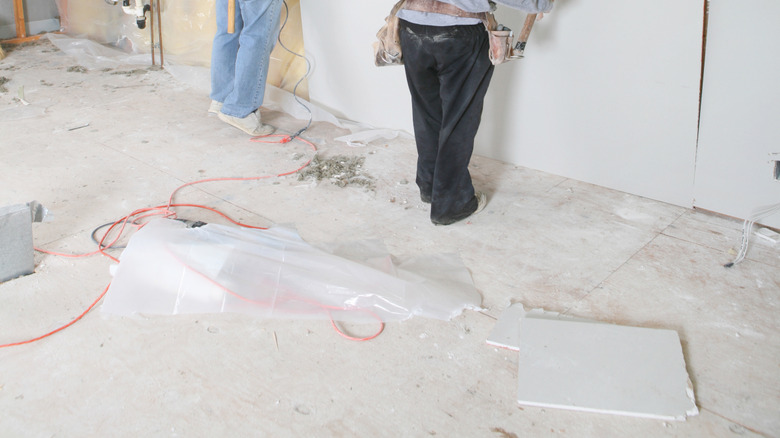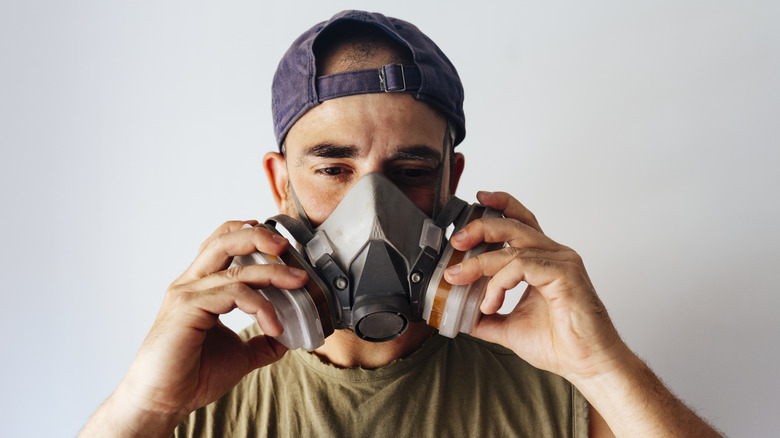What You Need To Know About Drywall Dust Dangers
We may receive a commission on purchases made from links.
If you're working on a home extension, garage conversion, or just remodeling a small basement, you will be using drywall. That's inevitably going to expose you to dust. It's not unusual to see people working away with no kind of personal protective equipment, but that's a mistake. Here's what you need to know about drywall dust dangers and how to make sure you stay healthy.
To understand the hazards, it helps to know what drywall (or sheetrock) is. The main component is gypsum, which is basically crushed rock. It is sandwiched between two thick sheets of paper (hence sheetrock). Drywall might also include other types of minerals such as silica, mica, calcite, and talc. Each of these could be found in drywall dust, and the CDC recognizes all of them as irritants. They can cause problems with your eyes, nose, throat, and respiratory tract. So, is drywall dust toxic? Yes, it is. Breathing in silica, in particular, can cause a disease called silicosis that can lead to permanent lung damage.
Even if you know how to hang drywall like a pro, you can't prevent dust from getting into the air. Short periods of exposure might leave you with runny eyes, a blocked nose, or a dry cough. If you work in that atmosphere for any length of time, you could also suffer from shortness of breath and over-tiredness. You might end up being unwell for weeks or even months.
Reducing dust and protecting yourself from the dangers
If old walls need to come down, there are ways to remove drywall without making a mess and causing mountains of dust. For instance, don't rush at it with a hammer. Instead, saw through it so that you can remove large pieces rather than dozens of small fragments. However, if you're installing new drywall and thinking about cutting it with a circular saw, don't do it. Professionals score through the paper with a utility knife and a straight edge, then snap the sheet. It's a lot faster once you get the hang of it and dramatically reduces airborne dust.
Regular cleanups are another good idea, so dust isn't lying around to be kicked up or blown about. Use a vacuum, not a brush. Something like the VacMaster Beast wet and dry vacuum with its fine particle filter is built for the job, and at around $100 is a great DIY investment.
Last but by no means least, protect yourself properly. At the very minimum get some lightweight disposable masks like these 3M Particulate Respirators. Be sure to buy N95, which is made to US safety standards, rather than KN95, which is Chinese. Better yet, get a lightweight half-mask respirator, such as this affordable RBLCXG Reusable Respirator with safety glasses and filters. These provide a better seal around your nose and mouth, and they have higher filtration to keep out drywall dust particles. You can get them with a pair of goggles to keep the dust out of your eyes for about $20. Not much to make sure you can breathe easy.

